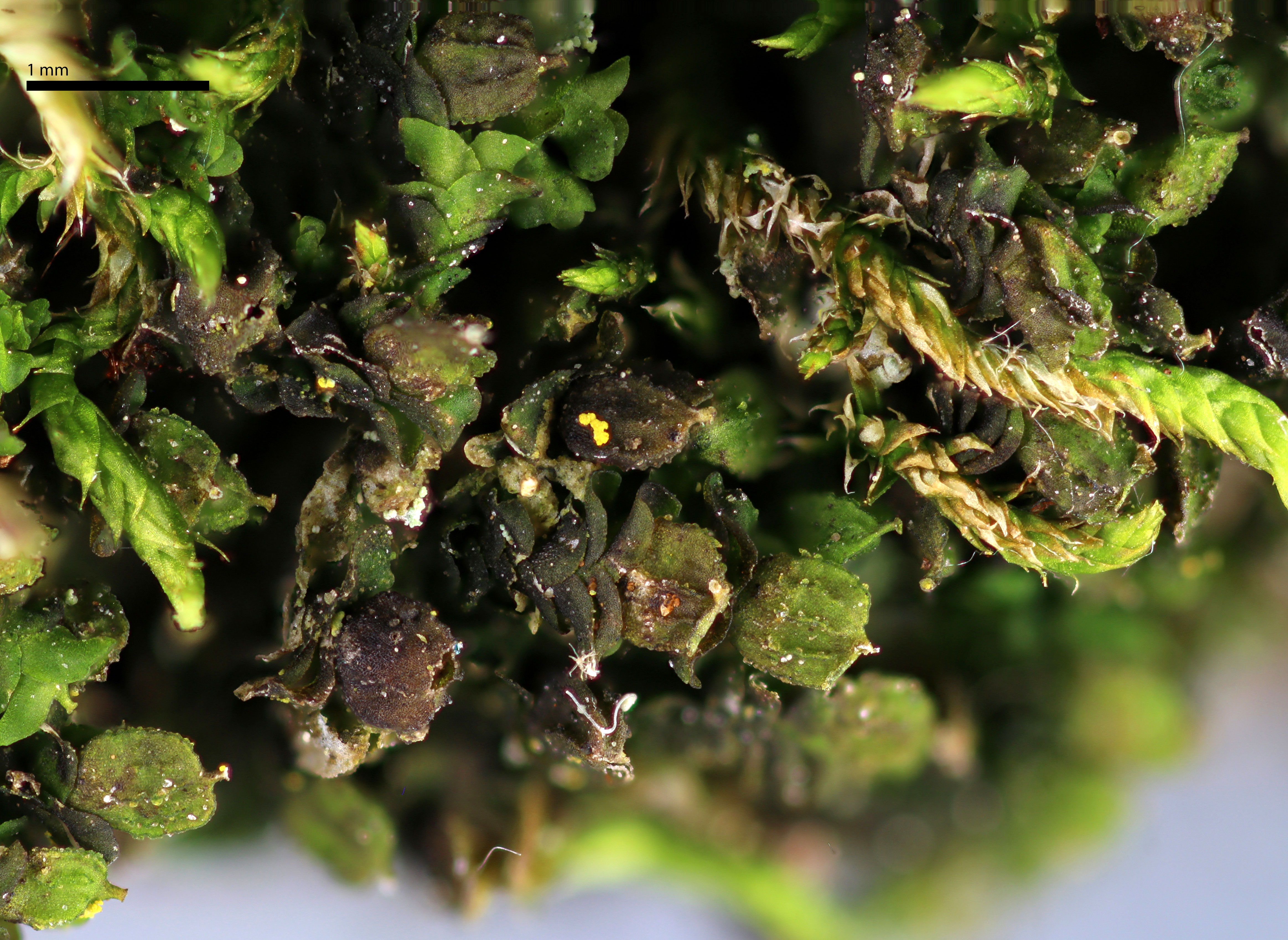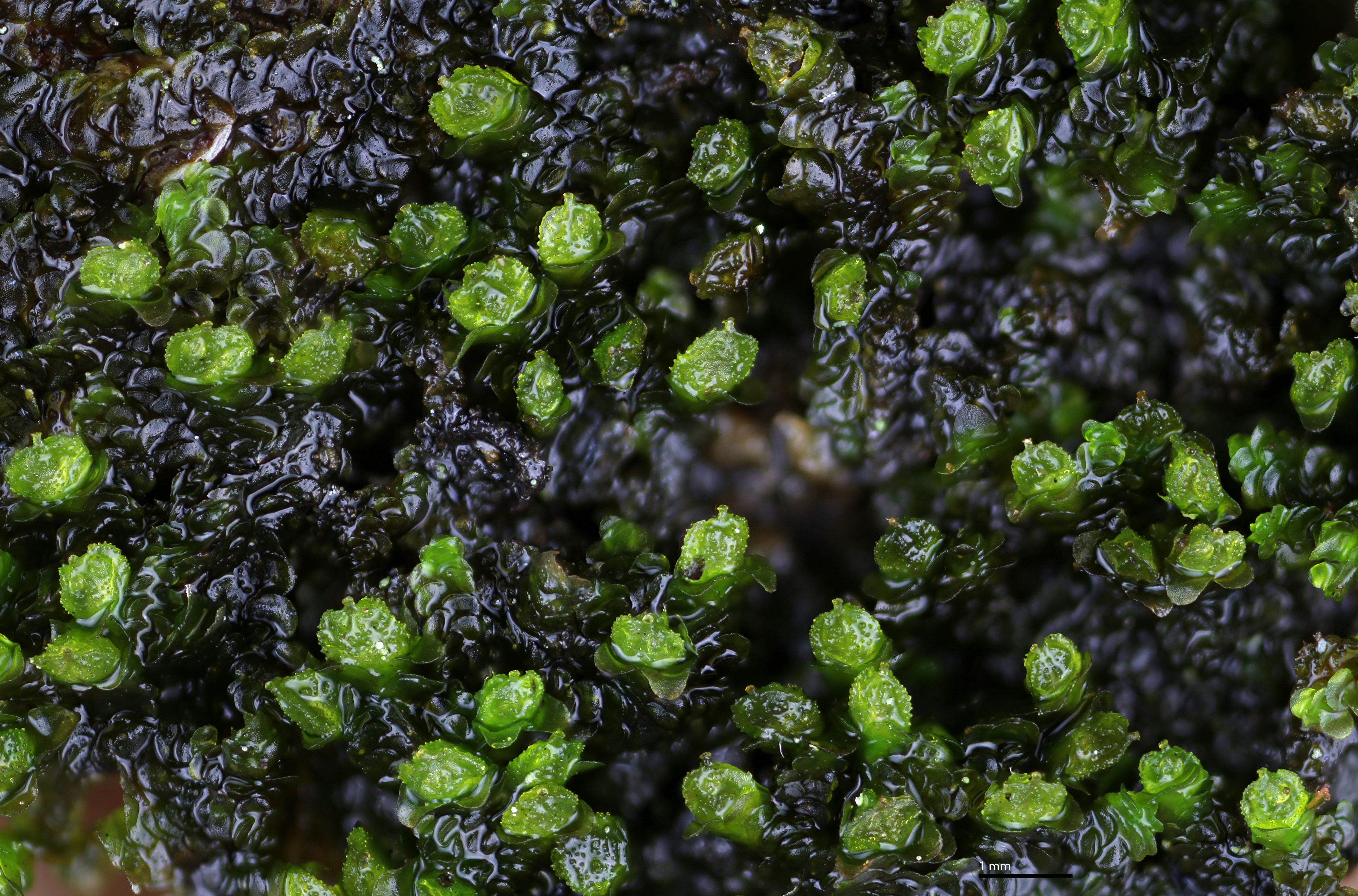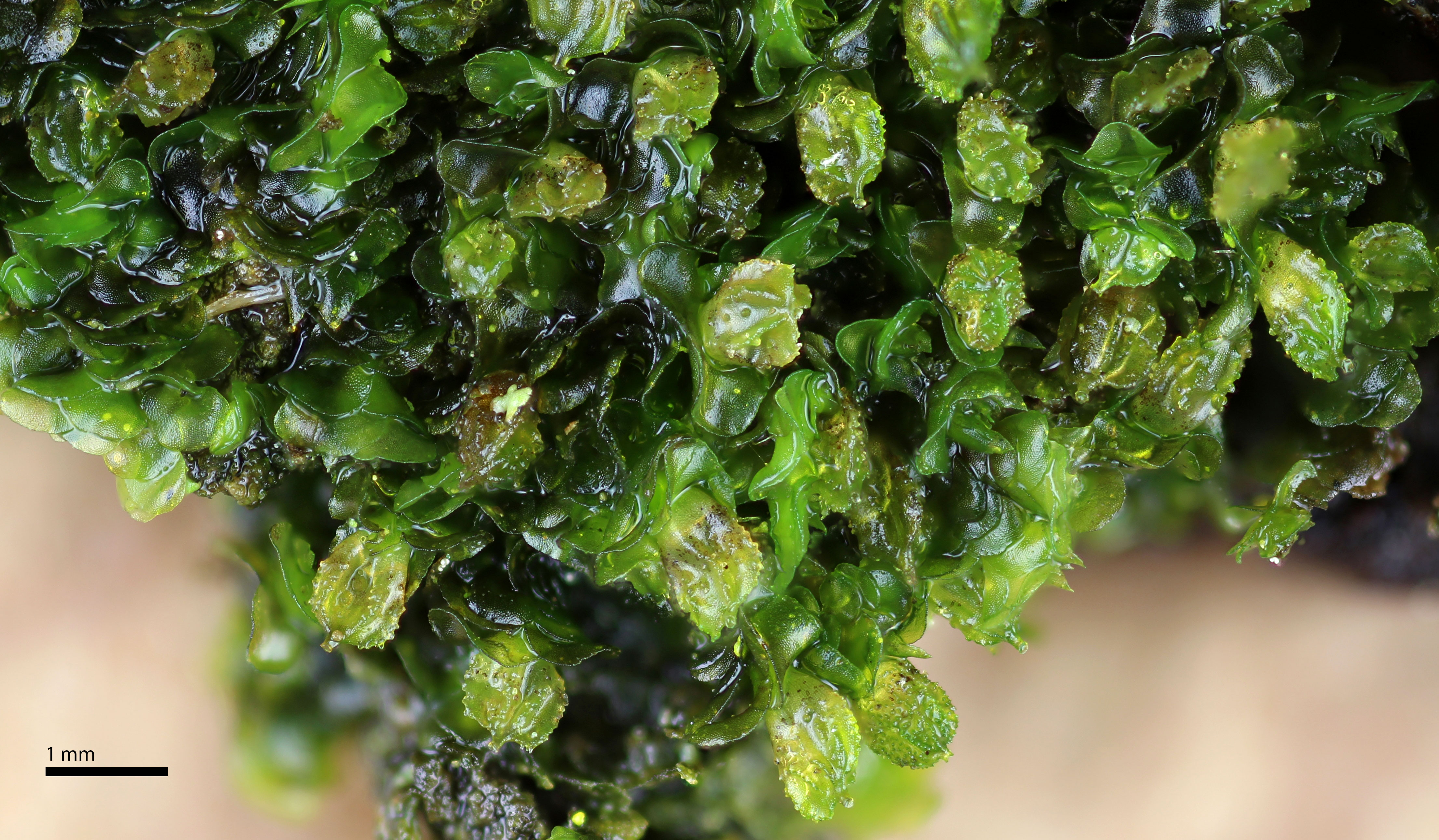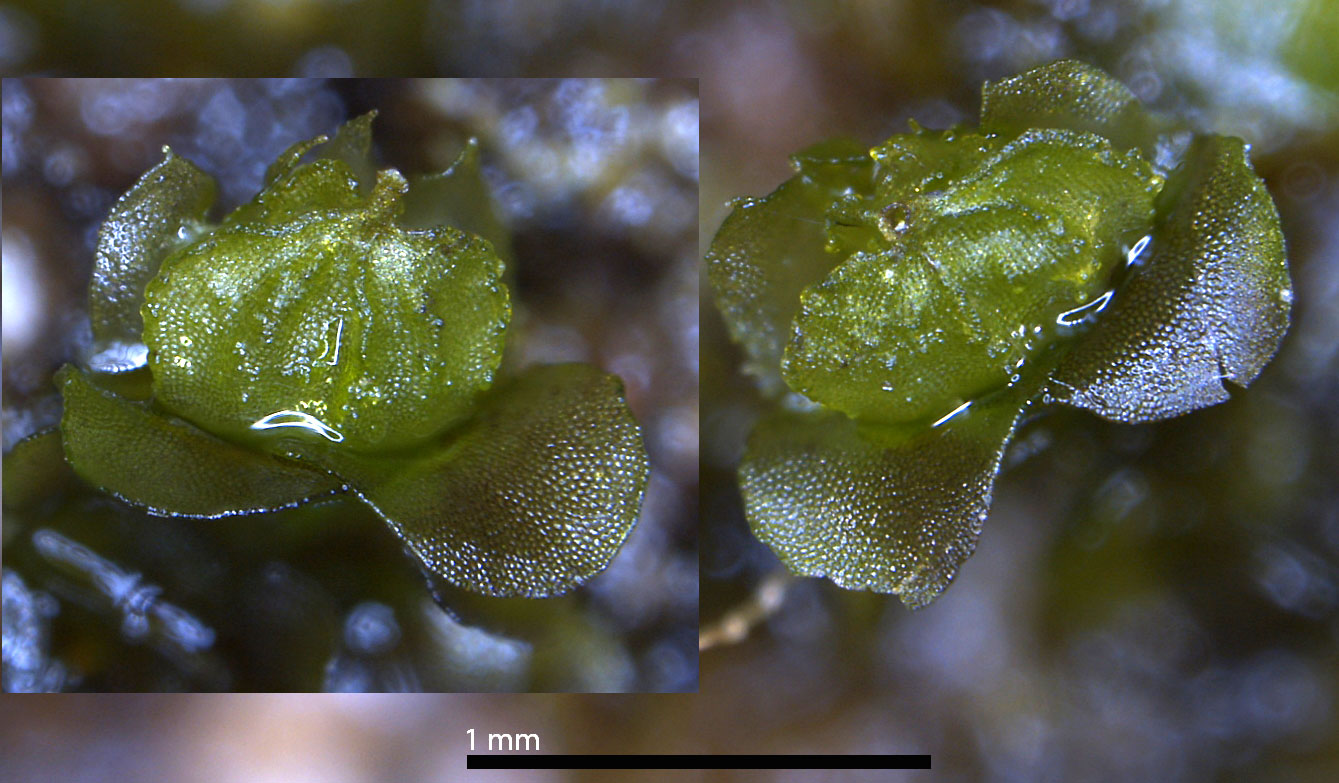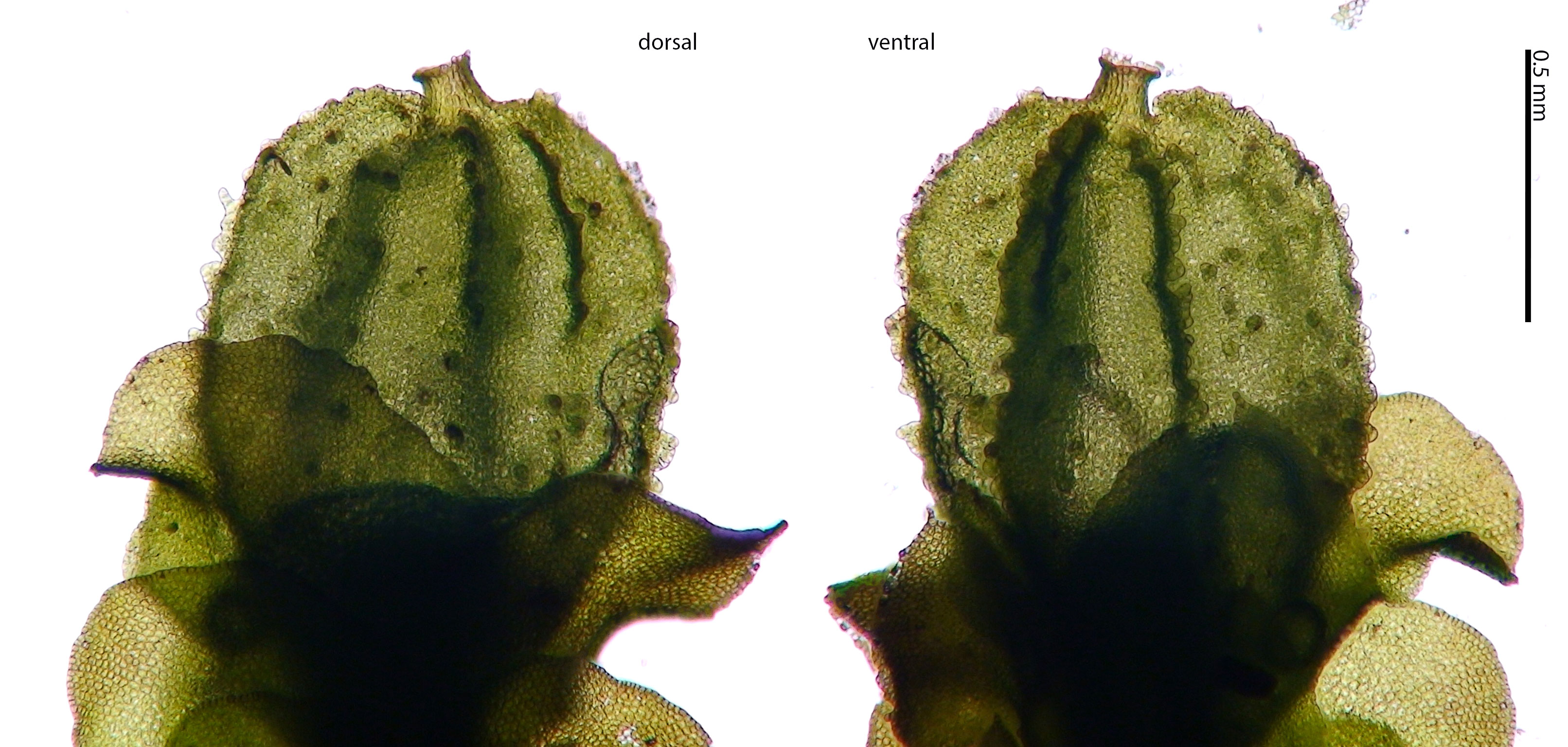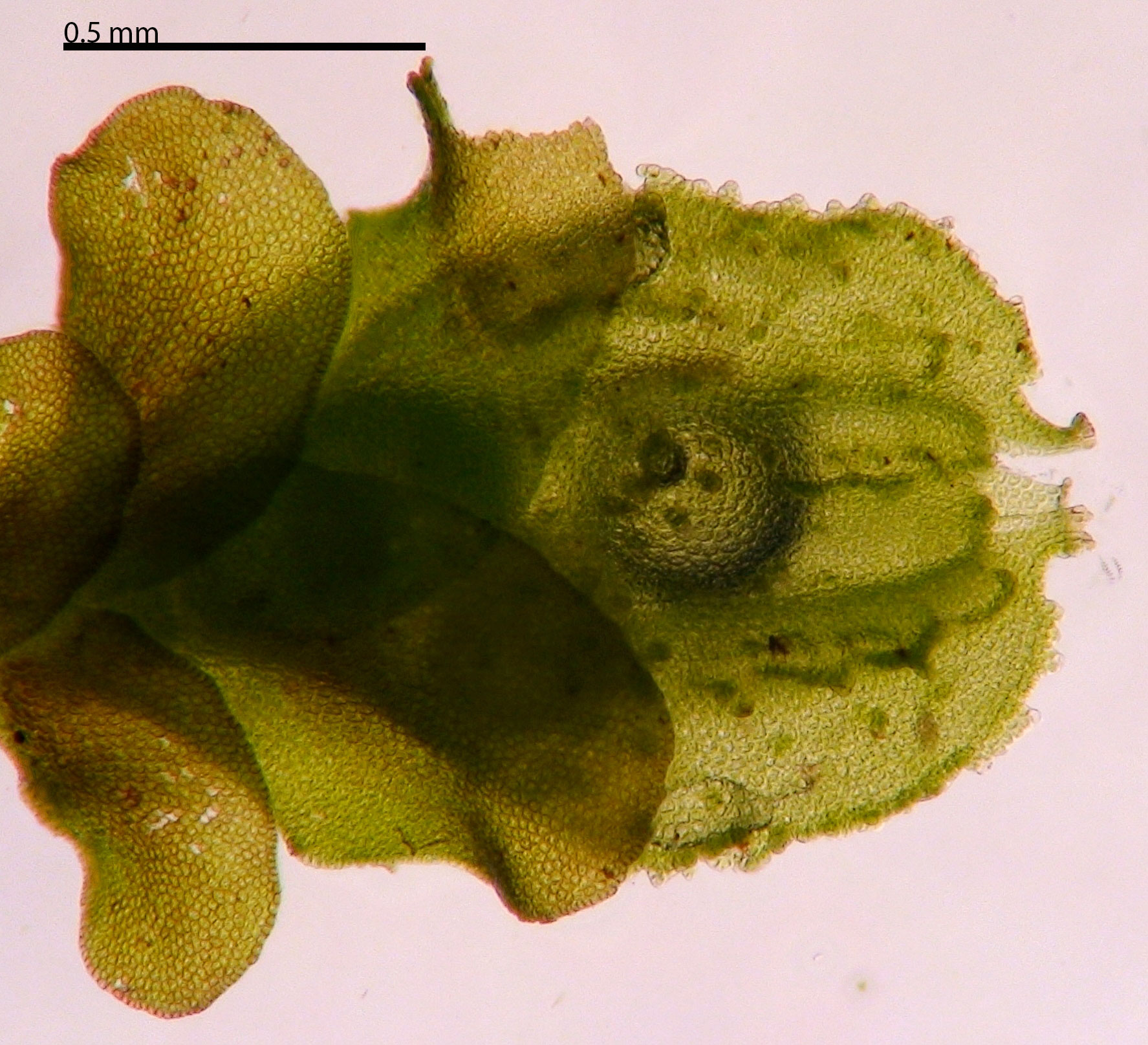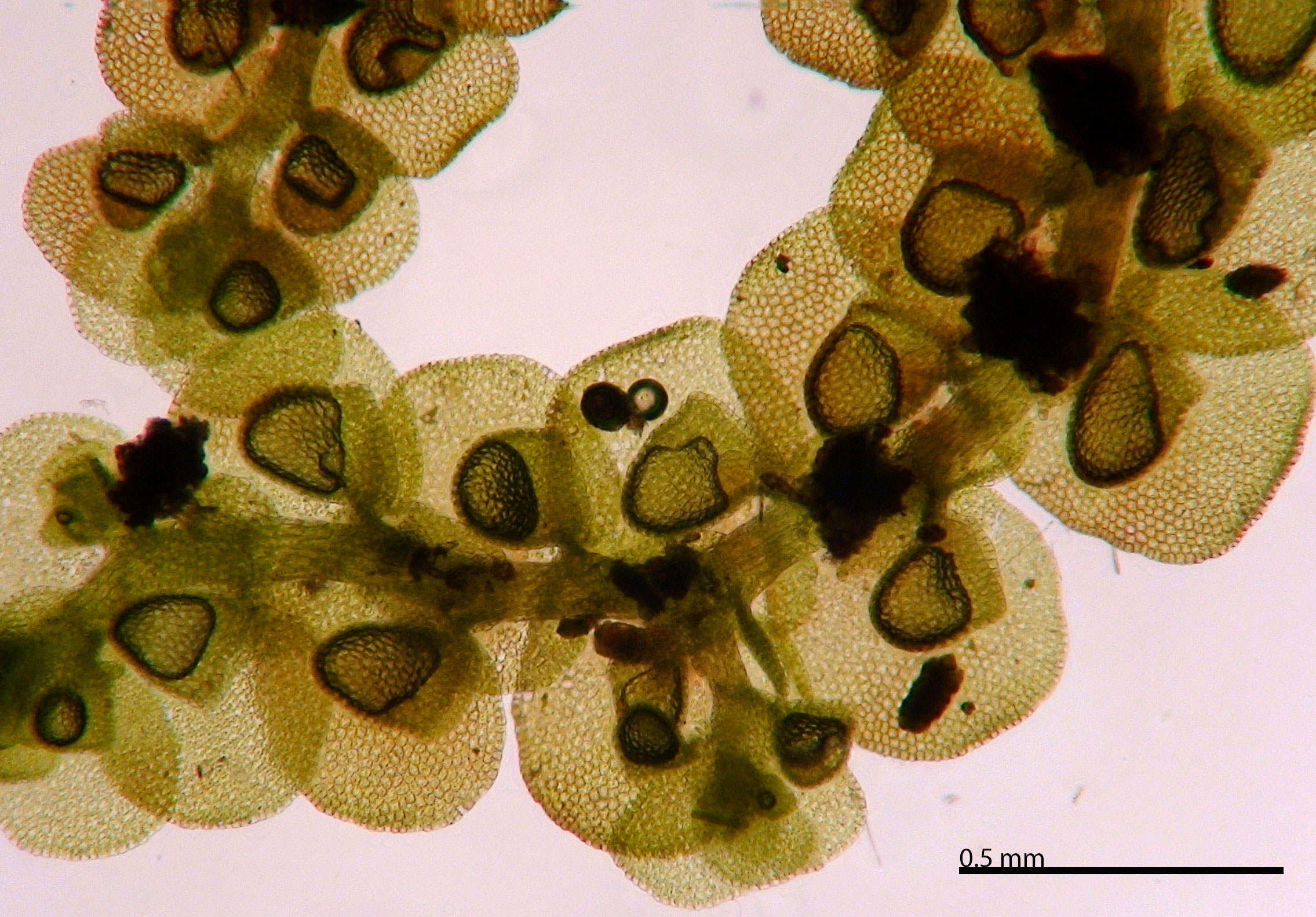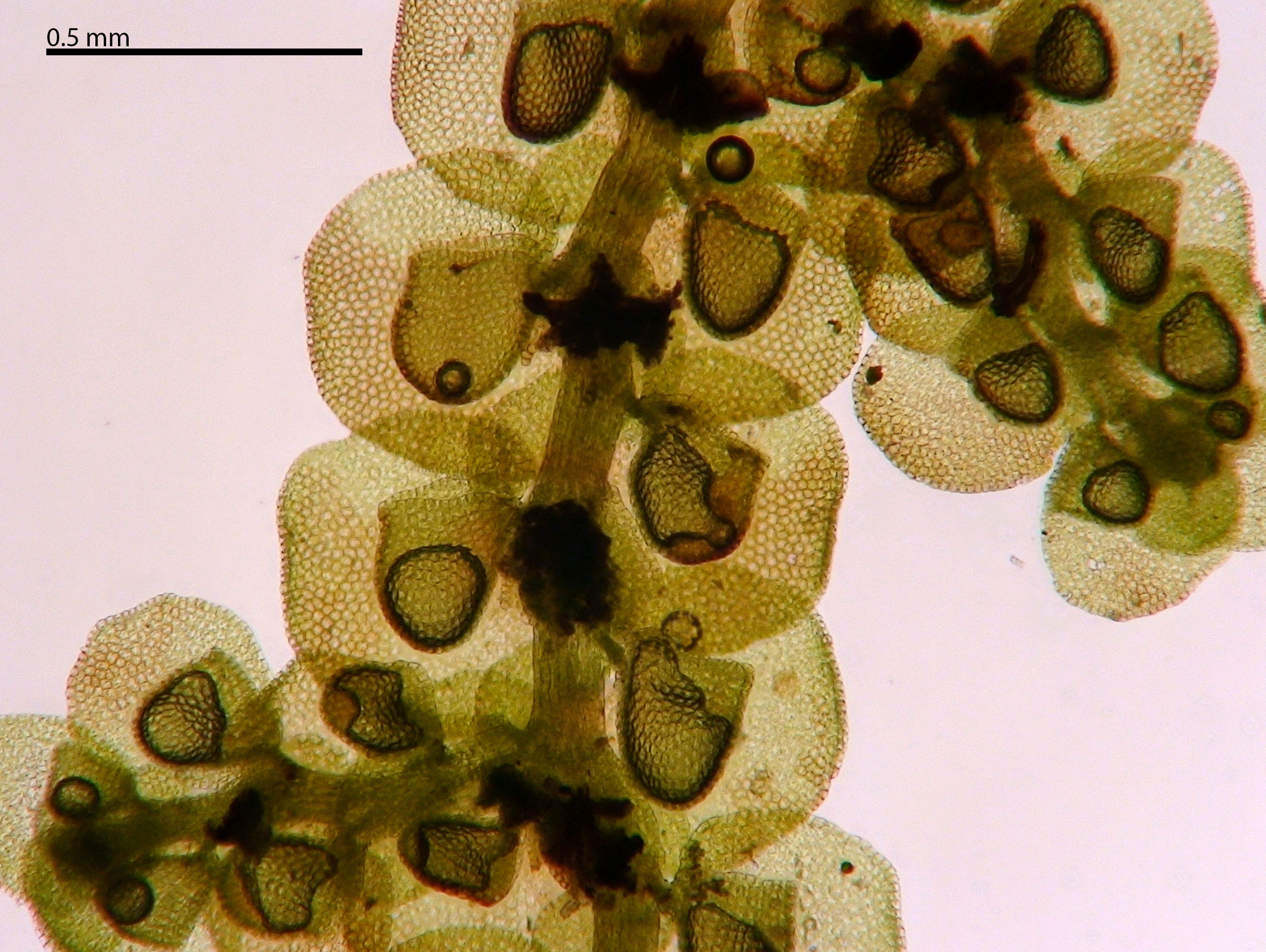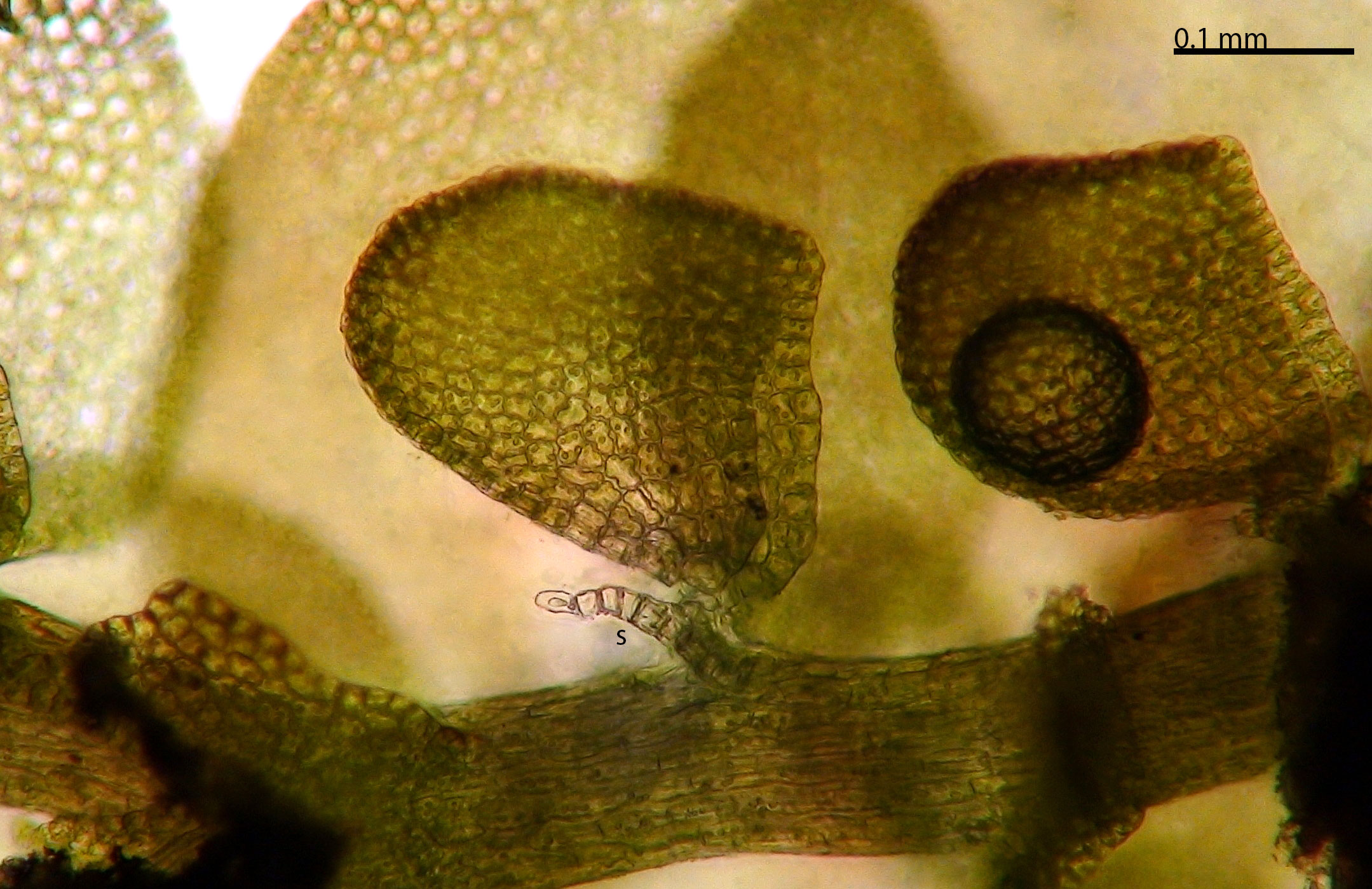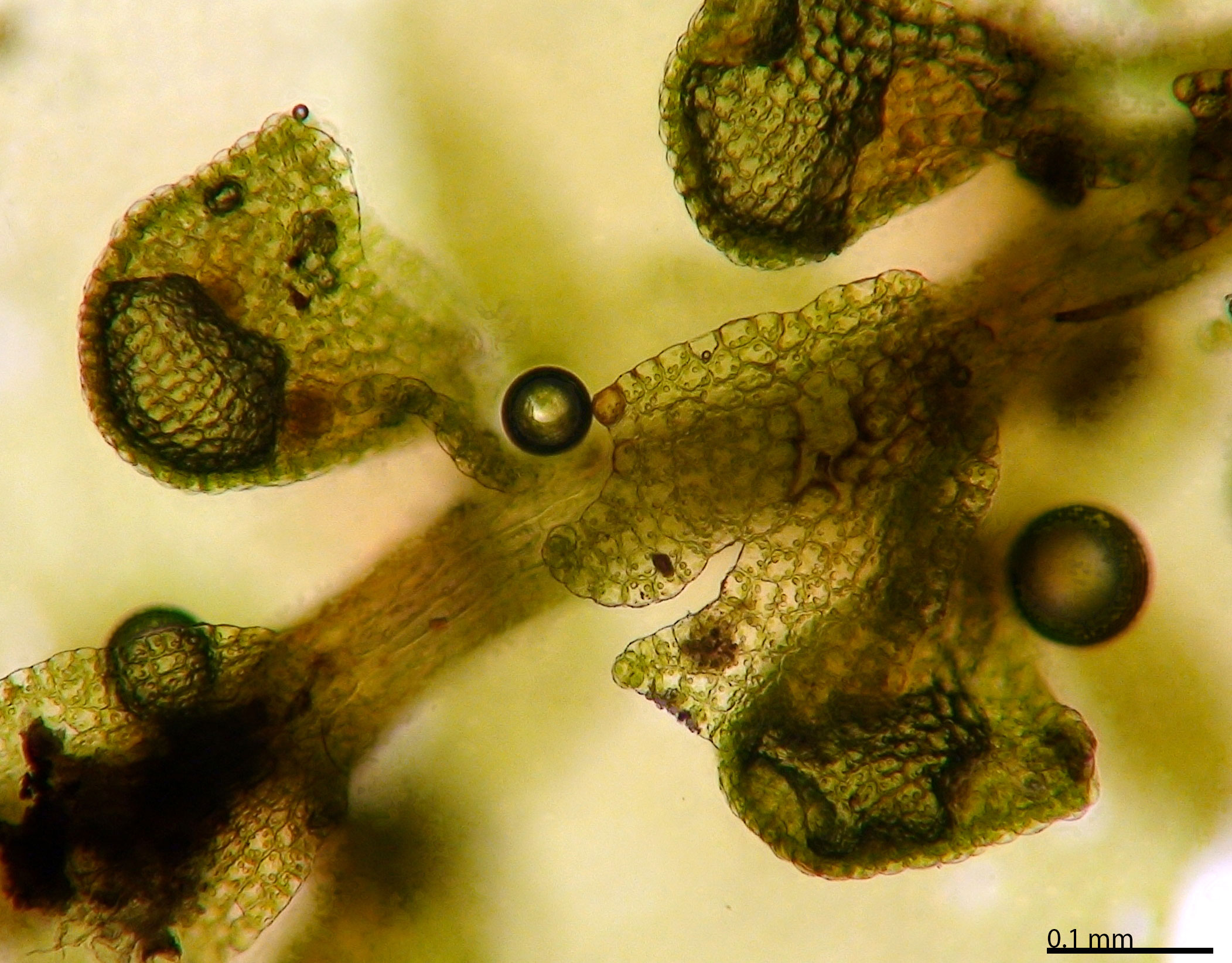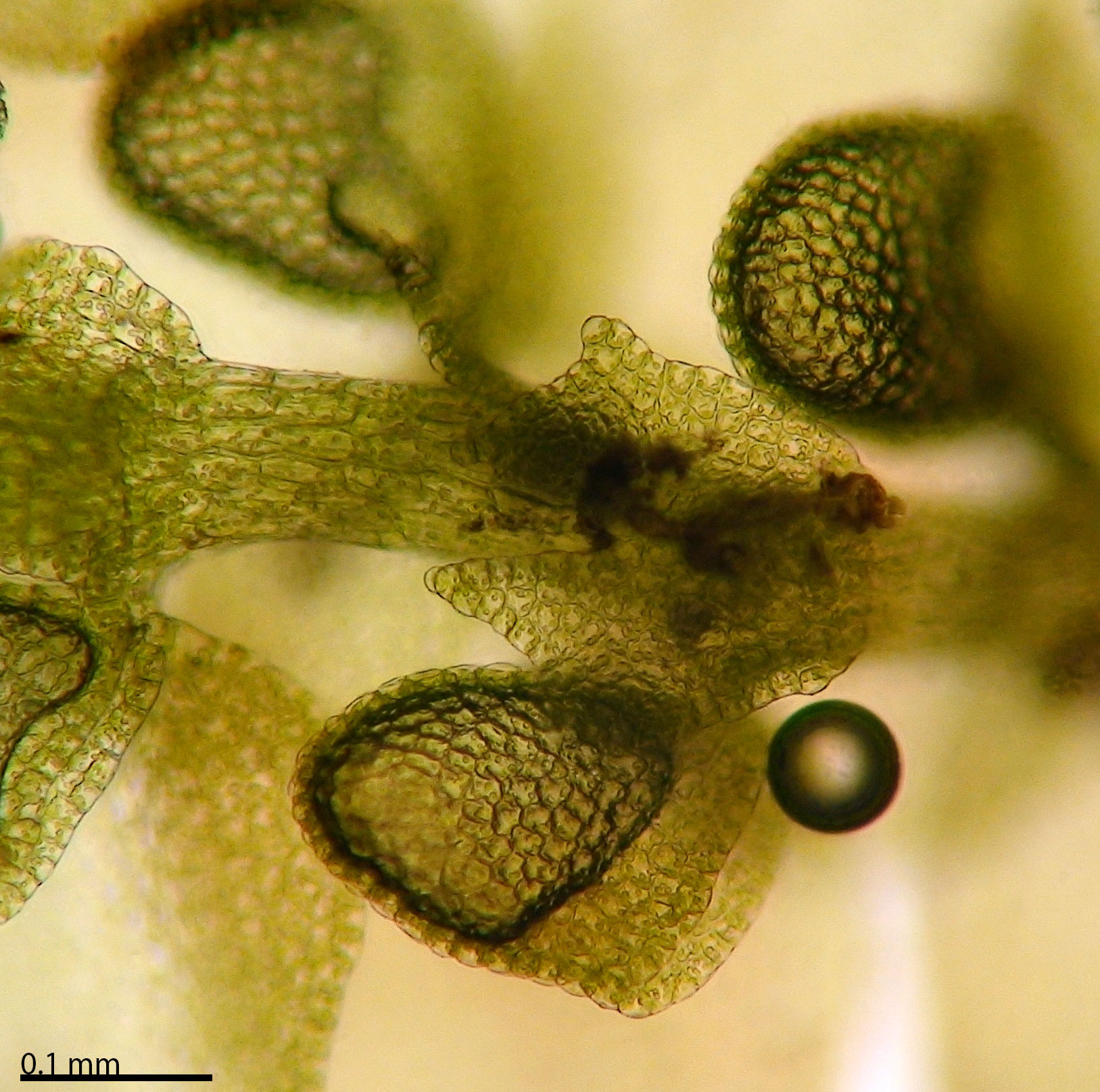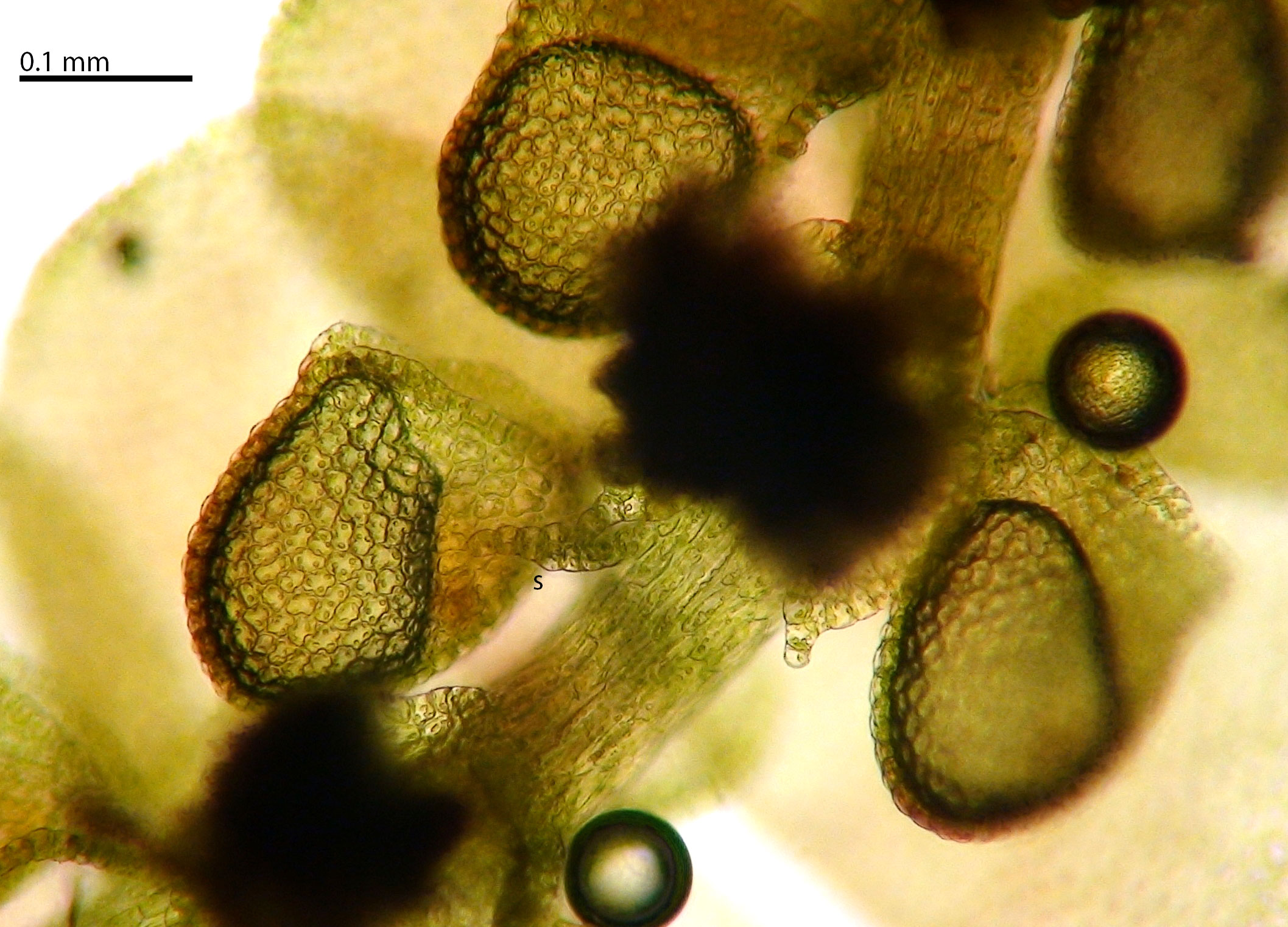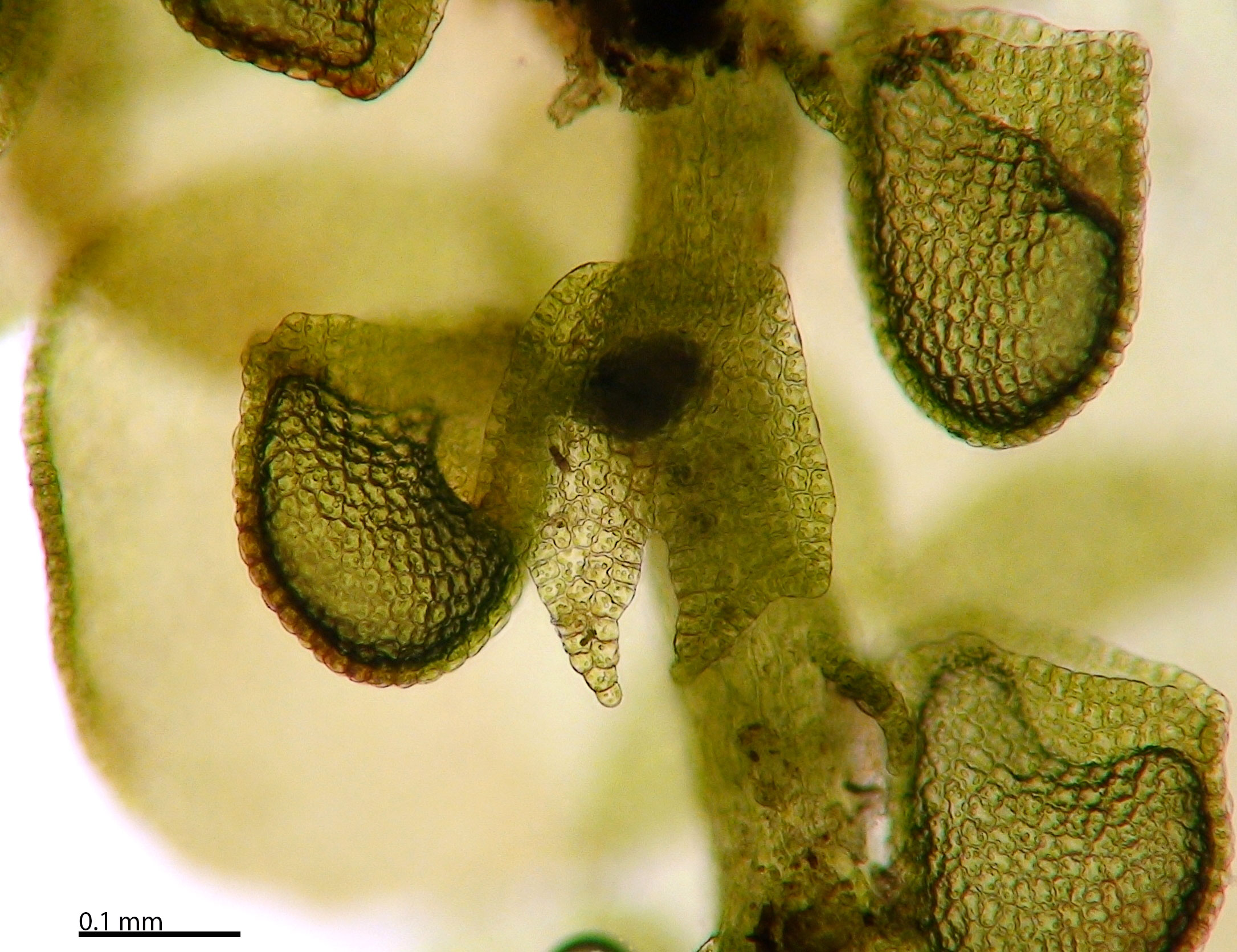Frullania virginica Gottsche, in Lehmann
Family: Frullaniaceae
Synonyms
Frullania eboracensis subsp. virginica (Lehmann) R.M. Schuster
NatureServe Conservation Status
G5TNR for F. eboracensis subsp. virginica
Distribution
North America, U.S.A. Alabama, Arkansas, Delaware, Florida, Georgia, Illinois, Louisiana, Mississippi, Missouri, North Carolina, Oklahoma, South Carolina, Tennessee, Texas, Virginia (Atwood 2017).
Habitat
On trees especially in early successional forests and in urban areas on open grown trees and shrubs often growing in association with Frullania inflata. The species is perhaps rare or absent above 3000 ft in elevation.
Brief Description and Tips for Identification
Froming dark green to brownish-black mats on bark of trees. Often mixed with other species of Frullania especially Frullania inflata.
Dioicous. Usually fertile. Perianths usually strongly tuberculate. Females bracts typically squarrose when wet. Androecial branches becoming elongated.
The wavy cell walls in the leaf lobe together with oil bodies numbering 2-5 per cell are characters shared with Frullania eboracensis and F. appalachiana. The supplementary ridges of the perianths and the squarrose (when wet) female bracts easily distinguish F. virginica. Differences in underleaf and lobule morphology between these three species is less reliable at least for poorly developed material. That said, neither F. virginica nor F. eboracensis possess lobules with strongly compressed mouths that may be found in F. appalachiana. Small forms of F. virginica may have squarrose leaves when wet and produce caducous leaves that bear rhizoids and regenerates along the leaf margins.
Salient Features
- Perianths with supplementary ridges
- Perianths often highly tuberculate but varying to sparsely tuberculate
- Lobules variable in size but lobule mouth usually open, rarely closed
References
Atwood, J. J. 2017. Frullaniaceae. Bryophyte Flora of North America, Provisional Publication.
Habit
Morphology
Morphology
Morphology
Similar Taxon
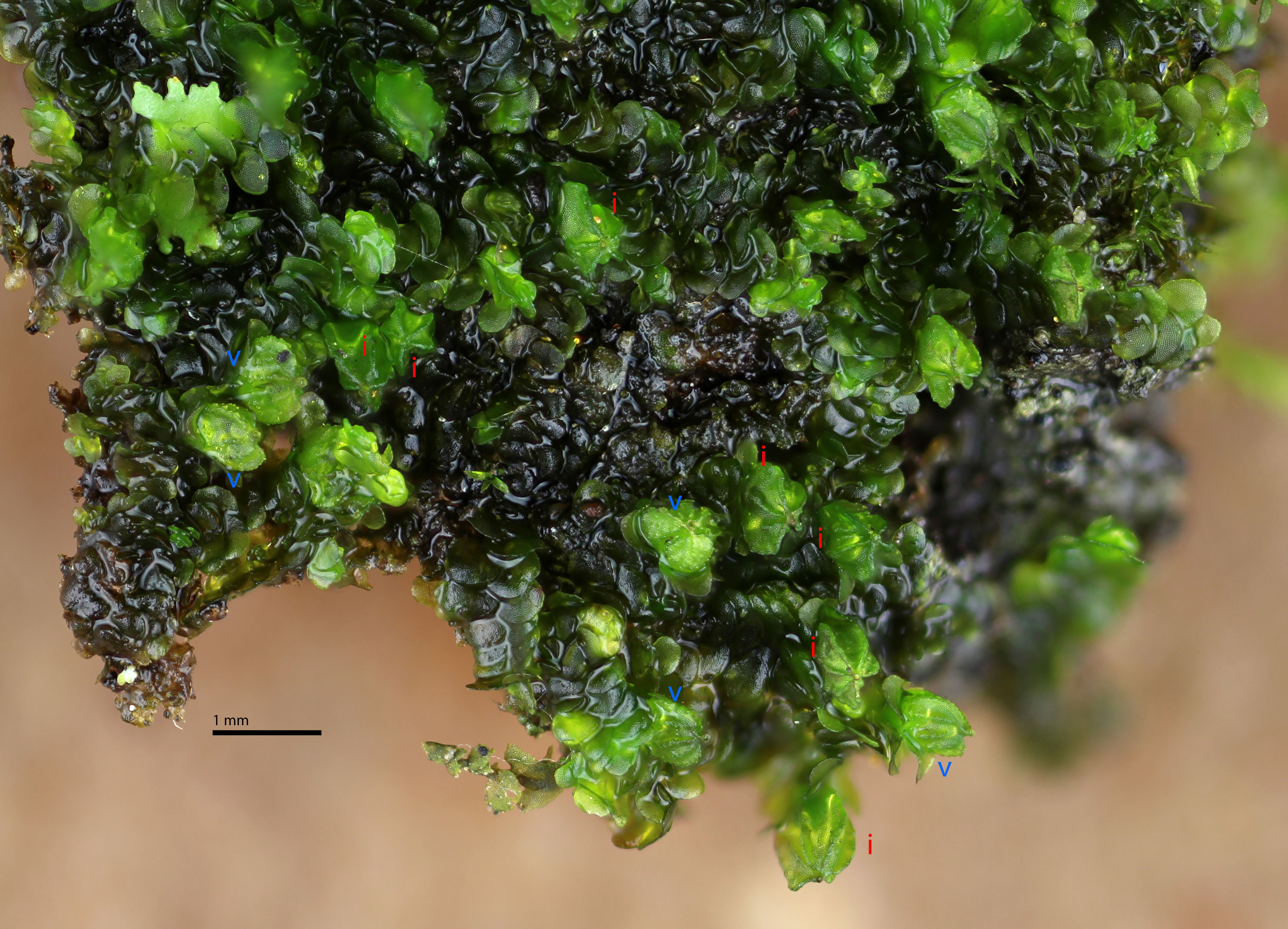
Frullania inflata
Very commonly F. inflata occurs admixed with F. virginica. With practice one can quickly see the distinctions between the two based on the form of the perianths (see above, i= inflata, v=virginica). Vegetative shoots require closer observation to access cytological differences, namely the general lack of strongly wavy cell walls in the leaf lobes of F. inflata.

